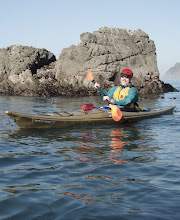The fact that I'm using version numbers should be a not-so-subtle hint that things didn't go very well. I decided to do a box beam as described in The Stripbuilt Sea Kayak. So I got myself a sheet of plywood, ripped it into appropriately-sized boards, and then used the table saw to make the rabbets for the glued joints.
The mistakes I made were on version 1.0:
- Rabbets were not cleanly cut. I should have checked these more closely and sawed them a second time on the areas that didn't get cut cleanly.
- Due to some measuring mistakes, I ended up having to build it out of shorter pieces in a couple of areas. This may have made it less stable with shorter overlaps of the boards making up the sides.
- I used screws as well as glue to hold it together. The screws raised the plywood a little where they went in.
- I didn't put any internal cross pieces in to keep it from torquing.
To make a long story short, after much work trying to get the forms aligned on the strongback, I was not having very good luck. I came to the humbling conclusion that my first attempt was too sloppy and that I needed to work on Strongback 2.0, which I will discuss in a future post.

